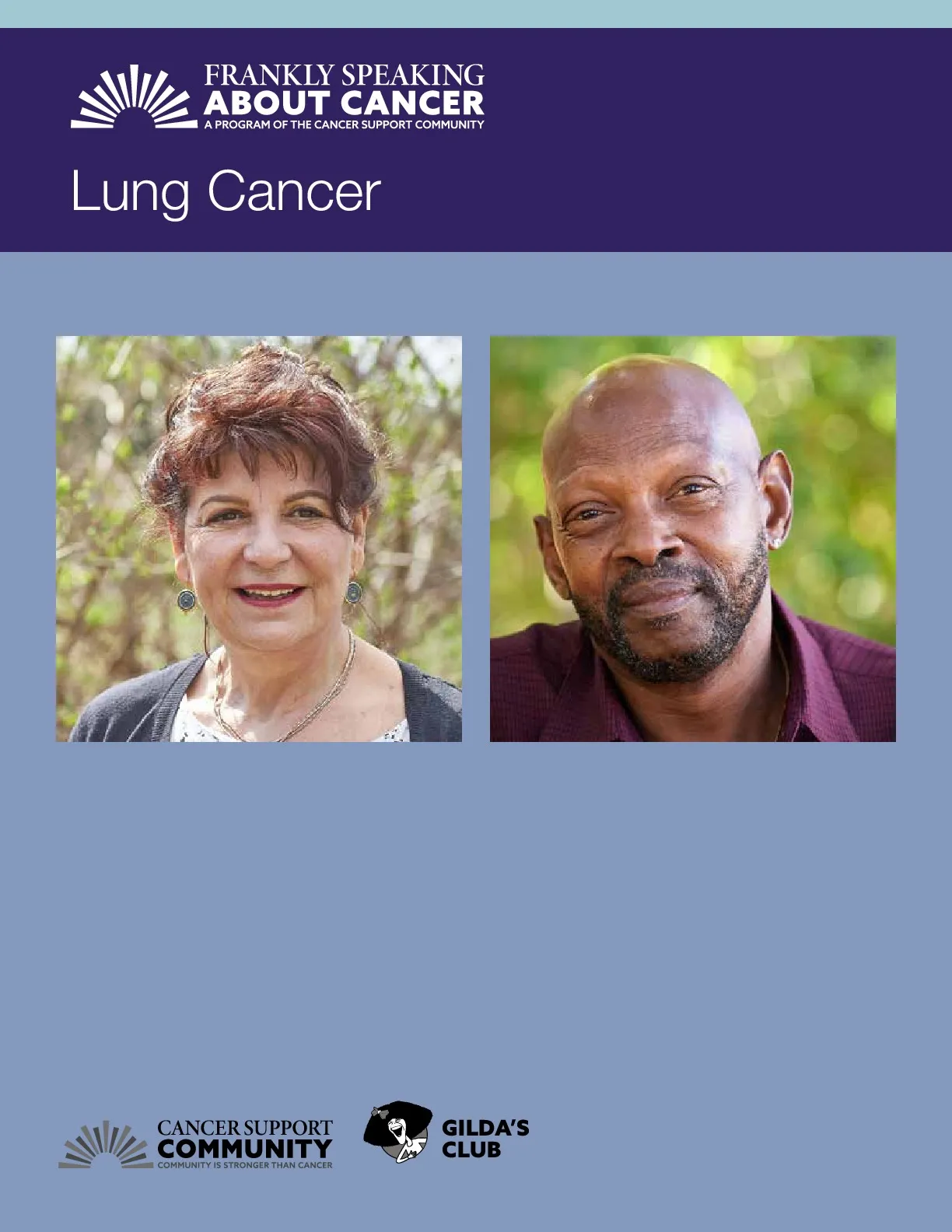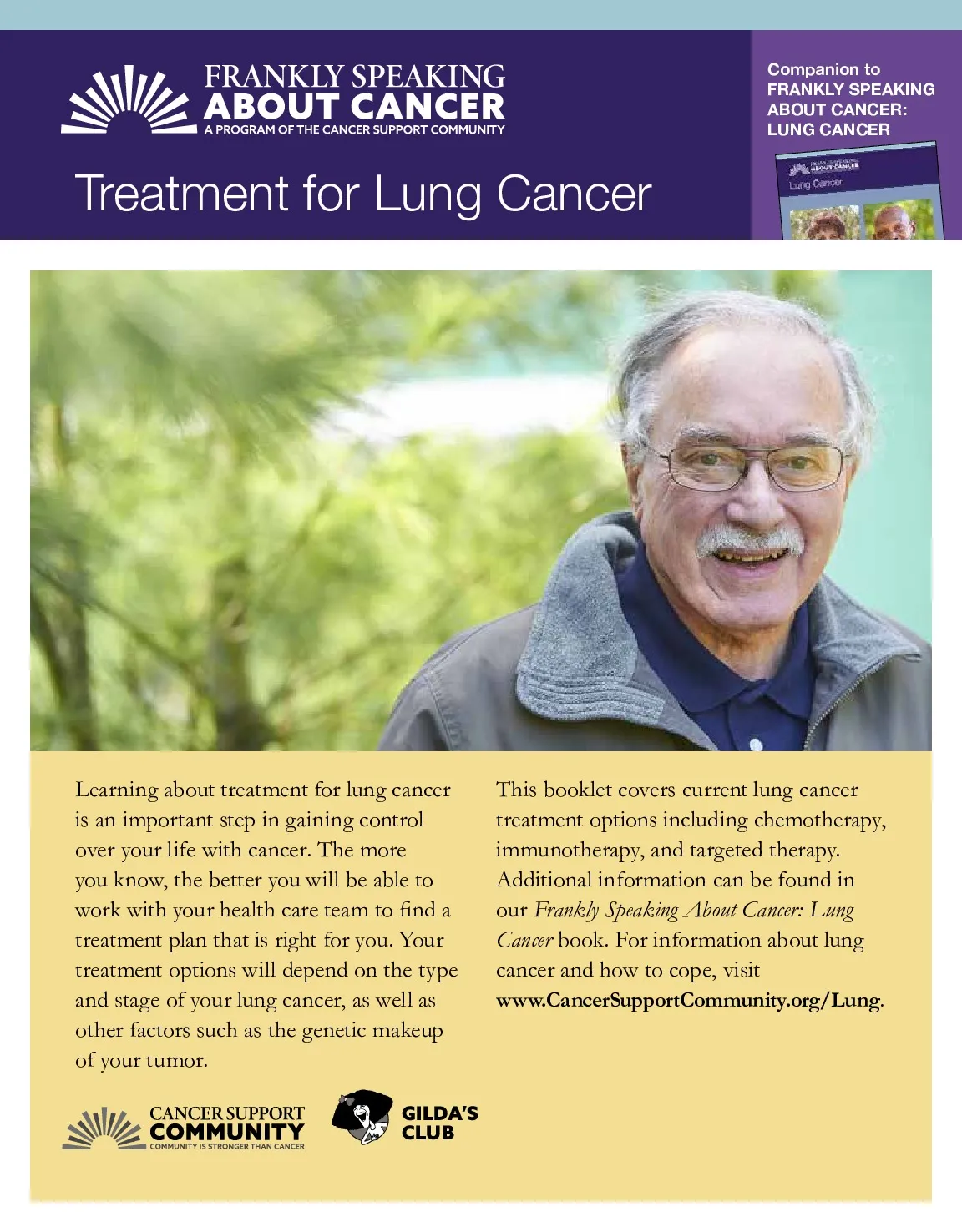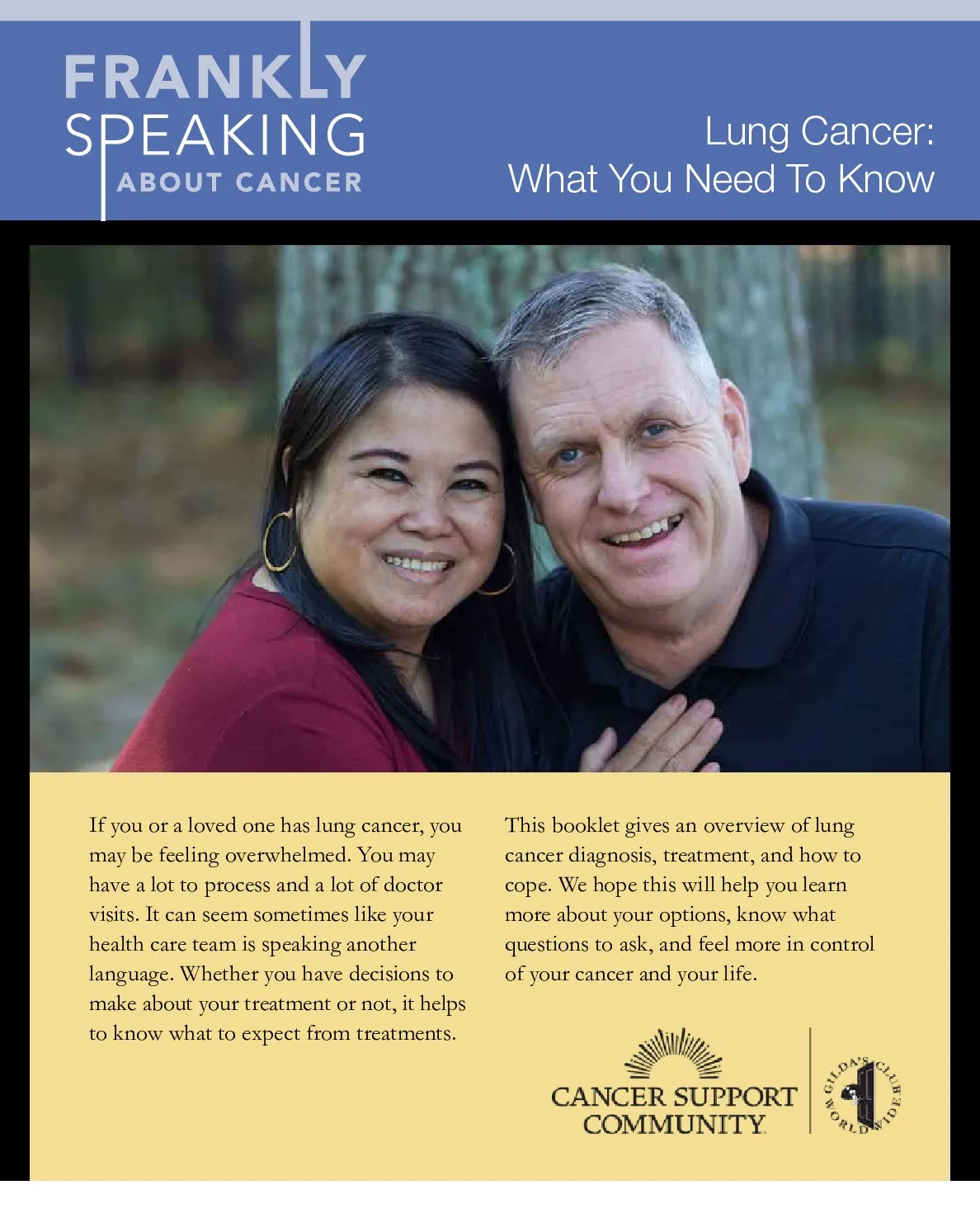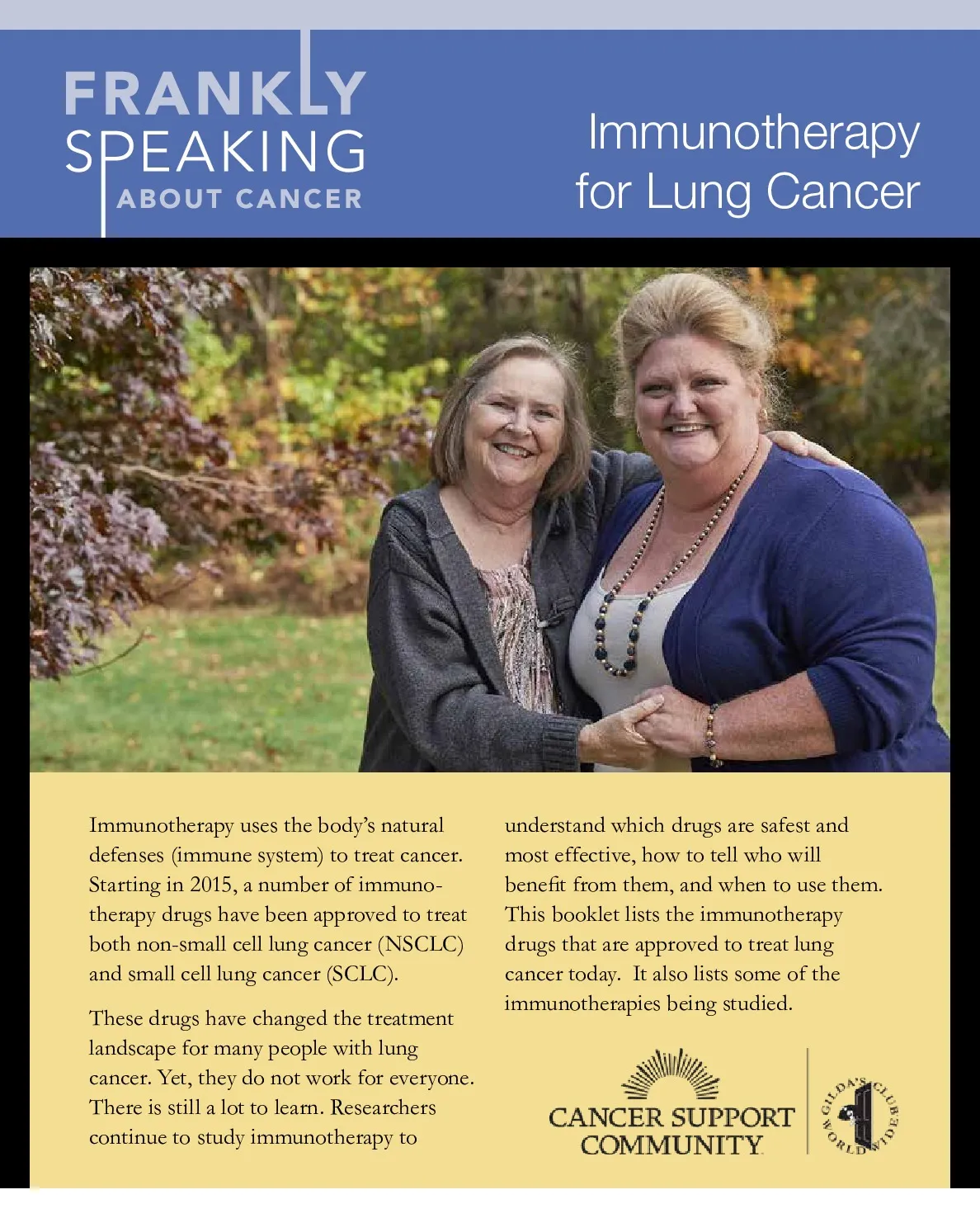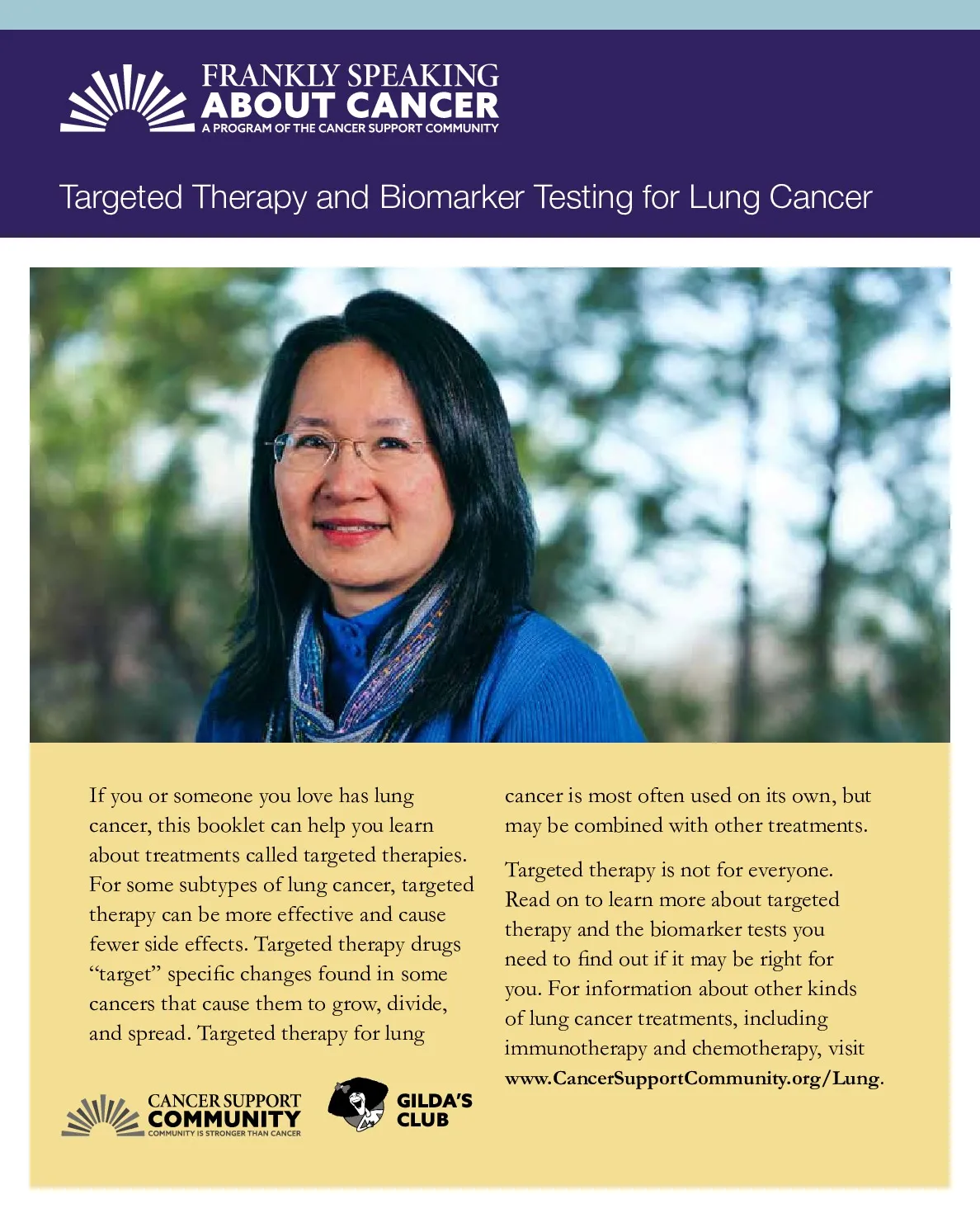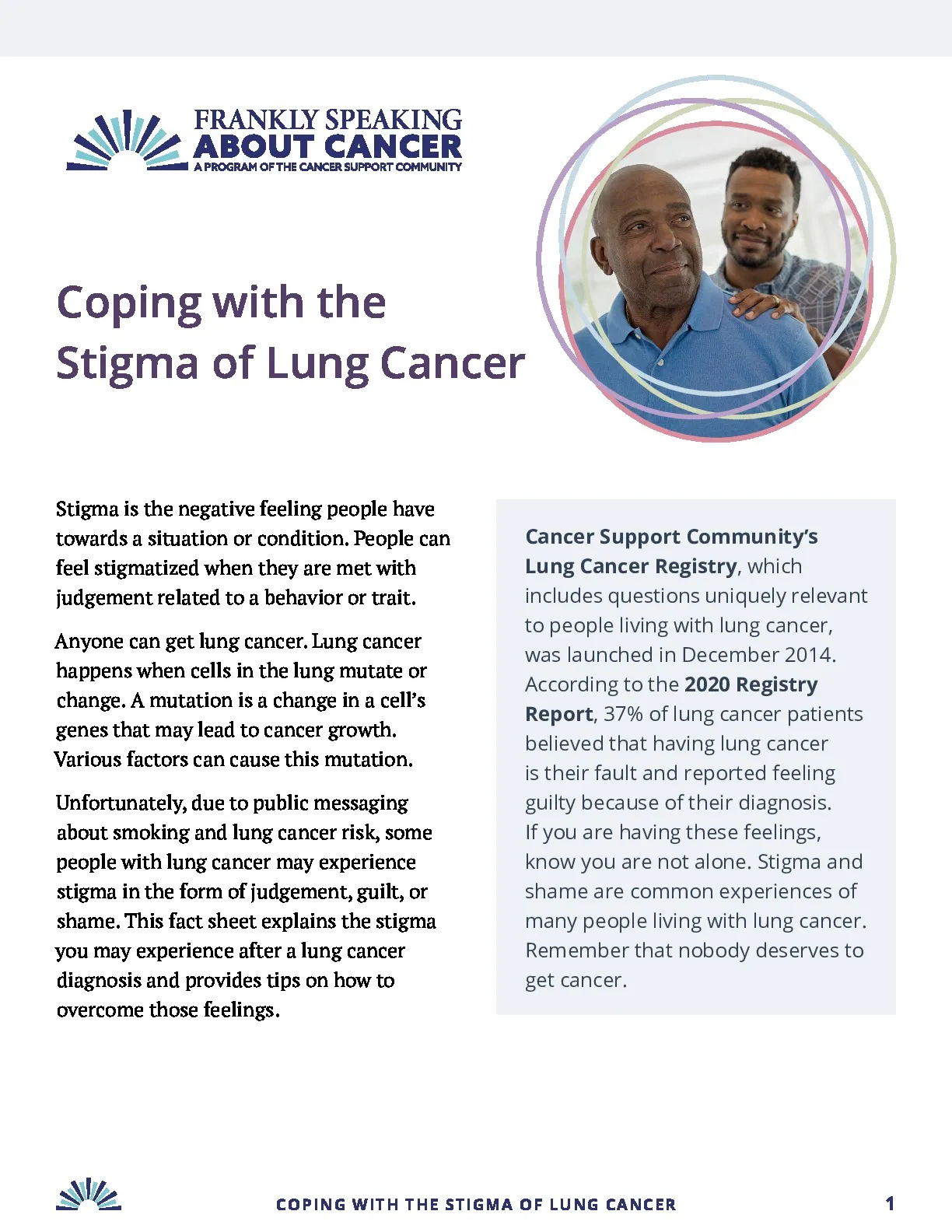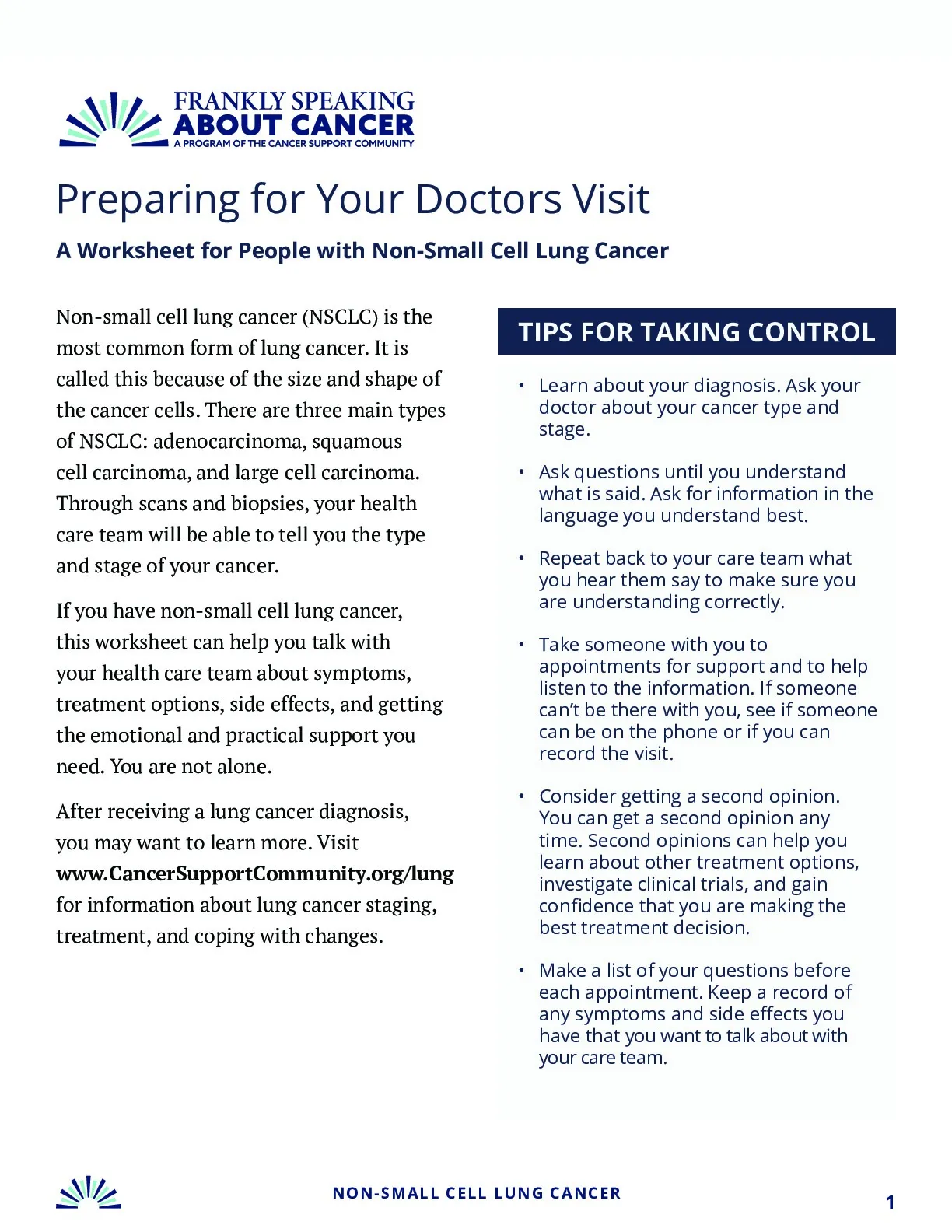Non-Small Cell Lung Cancer
Table of Contents
NSCLC is the most common form of lung cancer. In the United States, 85 percent of lung cancers are non-small cell lung cancers.
3 Types of NSCLC
- Accounts for about 40 percent of all lung cancers in the United States
- Is the most common lung cancer diagnosed in women
- Usually starts in cells that make mucus near the outer edges of the lungs
- May occur in those with a history of smoking, but is the type most often found in those who never smoked
- Accounts for about 30 percent of all lung cancers in the United States
- Usually starts in the thin, flat cells in the lung’s airways
- Is strongly associated with smoking
- Accounts for about 5 to 10 percent of all lung cancers in the United States
- May start in any part of the lung
- Is often the diagnosis when other types of lung cancer have been ruled out
Staging
Your doctor will recommend the treatment type and approach based on your cancer’s stage. Non-small cell lung cancer has the following stages:
- STAGE 0 (Carcinoma in situ)
- STAGES IA & IB (1A & 1B)
- STAGES IIA & IIB (2A & 2B)
- STAGES IIIA, IIIB, & IIIC (3A, 3B, & 3C)
- STAGE IV (4)
- This very early stage is marked by abnormal cells only in the air passages.
- The tumor is small and cancer has not spread to the lymph nodes.
- In Stage IA, the tumor is 3 cm or less. In Stage IB, the tumor is between 3 and 4 cm.
- In Stage IIA, the tumor is between 4 and 5 cm. It has not spread to the lymph nodes.
- In IIB, the tumor is smaller than 5 cm and cancer has spread to the lymph nodes on the same side of the chest as the tumor.
- The tumor may be larger than 5 cm but has not spread to the lymph nodes.
- Cancer has spread to the lymph nodes. It has not spread to other parts of the body.
- The tumor may be bigger or the cancer may be in an area that is harder to reach than cancers in earlier stages. Stages IIIB and IIIC are often treated more like Stage IV cancers.
Cancer has spread beyond one lung. It is in the other lung, the fluid near the lungs (the pleura) or heart (pericardium), or another part of the body. When it spreads, lung cancer often moves to the brain, bones, liver, kidneys, or adrenal glands
Biomarker Testing for NSCLC
Biomarkers are features of your tumor that can be measured to help guide your therapy. This is called biomarker testing. Biomarker testing is often also called molecular testing, genetic testing, or genomic testing.
If you have advanced non-small cell lung cancer (NSCLC), ask to have your tumor tested for biomarkers including EGFR, ALK, BRAF, ROS1, NTRK, MET, RET, KRAS, HER2, and PD-L1. A positive test may open the door to more treatment options. Testing can be done in one, multi-panel test. This test will also look for other biomarkers that are being studied in clinical trials. Learn more about biomarkers for lung cancer and the treatments that target them.
Which Biomarkers Matter for You?
Our Lung Cancer Biomarker Tool can help you understand what test you should get and what the results mean for your treatment.
Treatments
There are many possible treatments for non-small cell lung cancer. They work in different ways and have different side effects. Be sure to ask about the side effects before you start treatment. Your treatment options will depend upon the stage of your lung cancer.
Review Your Treatment Options
- Surgery
- Chemotherapy
- Radiation
- Chemoradiation
- Immunotherapy
- Targeted Therapy
- Clinical Trials
- Ablation Therapy
- Tumor Treating Fields
- Palliative Care
If your cancer has not spread to other tissues, your doctor may recommend surgery to remove the tumor. The following surgical procedures may be used:
- Wedge or segmental resection – Surgery to remove a small part of the lung
- Segmentectomy – Surgery to remove one or more segments of the lung
- Lobectomy – Surgery to remove an entire section (lobe) of the lung
- Bilobectomy – Surgery to remove two lobes in the same lung
- Pneumonectomy – Surgery to remove an entire lung
- Thoracotomy – Surgical approach in which a cut is made across the chest and the ribs are spread apart so that the surgeon can reach the lung
- Video-assisted thoracic surgery (VATS) – Surgical approach that uses a tiny video camera to guide the surgeon, making a smaller cut to reduce recovery time
- Robotic Surgery – Surgical approach that uses a machine with remote-controlled robotic arms and miniature instruments, making a smaller cut to reduce recovery time.
Chemotherapy (also called chemo) uses drugs to attack and kill cancer cells. These drugs attack fast-growing cells like cancer. Most chemotherapy drugs are given by IV (through a vein). Some chemotherapy drugs can be taken orally, as a pill. Because the drugs continue to work for days or weeks after they are taken, a period of rest and recovery follows each dose or cycle.
Chemotherapy is given as a single drug or as a combination of drugs. Chemo also may be given at the same time as immunotherapy, radiation, or targeted therapy. Sometimes chemo and radiation are given on different days.
Radiation uses high-energy rays to kill cancer cells. It works by damaging the genetic material in cells. After radiation treatment ends, cancer cells can keep dying for days or even months. Ask about different kinds of radiation, such as photons, protons, CyberKnife, GammaKnife, and others.
This is a combination of chemotherapy and radiation therapy. It can be more effective than either alone in treating locally advanced NSCLC.
Immunotherapy is a type of cancer treatment that uses the body’s natural defenses (immune system) to identify, attack, and kill cancer cells.
The immunotherapy drugs that are currently FDA-approved to treat lung cancer are all known as checkpoint inhibitors. They are given into a vein through an intravenous (IV) line. You may receive them at your doctor’s office, at an infusion clinic, or as a day patient at a hospital. Which drug you receive will depend on biomarker testing results, overall health status, what you prefer, and your insurance. Ask your health care team if these drugs are an option for you.
New research is looking at other kinds of immunotherapy to treat lung cancer. These include vaccines and cell therapies. Ask your doctor about clinical trials.
Targeted therapy is a newer form of cancer treatment. It may be used to treat advanced NSCLC. Targeted therapies block the action of certain genes, proteins, or molecules that cause cancer to grow and spread. Your doctor will need to test your tumor for biomarkers to find out if targeted therapy is right for you.
Most lung cancer targeted therapies are taken by mouth as a pill. Treatments usually take place at home once or twice a day. A few targeted drugs are given by IV (through a vein), sometimes in combination with chemotherapy. If this is the case, you may have to go into the hospital every 3 to 4 weeks for treatment.
Be sure to ask your doctor about clinical trials. These are studies to test new treatments or learn how to use current treatments better. They may be the only way to try a promising new treatment.
Radio-frequency ablation (RFA) uses heat made by radio waves to kill cancer cells. Cryotherapy uses freezing to do the same thing. Either approach may be used in people with early-stage NSCLC who can’t have surgery. These treatments involve a small probe (like a needle) that goes through the chest and directly into the tumor.
Tumor Treating Fields (TTF) is a new innovation for treating metastatic non-small cell lung cancer. TTF is an FDA-approved wearable device that can be used in conjunction with chemotherapy and immunotherapy. This wearable device delivers low-frequency electric currents that can block cells from dividing. It can stop or delay cancer cells from growing. This treatment is known to cause fewer side effects than other common treatments. The most common side effect for TTFs is skin irritation.
Maintaining your best possible quality of life is an important goal. Some care you receive may not treat your cancer. Instead, it will address possible symptoms caused by your cancer or side effects from treatment, such as pain. It may help you with social, emotional, or spiritual concerns. This kind of care is called palliative care or supportive care.
Many hospitals offer palliative care at the same time as cancer treatment. It is often provided by a palliative care specialist. This person is a doctor or nurse who focuses on symptoms, side effects, and emotional needs of patients. If you are not referred to a palliative care specialist soon after you learn you have lung cancer, ask to see one.

Managing Treatment Side Effects
Being informed can help you and your healthcare team manage side effects of your cancer treatment.
Coping with NSCLC
A lung cancer diagnosis comes with challenges such as: coping with stigma/blame/shame, difficulty breathing, and lung inflammation.
Watch & Learn About Lung Cancer
Lung Cancer: What You Should Know
Frankly Speaking About Cancer Library
LibraryWould you like a print copy of these educational materials?
We can mail our Frankly Speaking About Cancer pieces to you. Shipping is free for up to 20 pounds.
Your Experience Matters
Help improve outcomes for lung cancer patients & caregivers. Join the Cancer Experience Registry.
